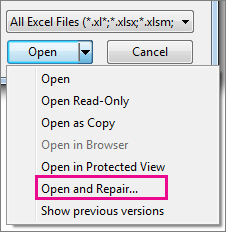

C:\Users\UserName\AppData\Roaming\Microsoft\excel\XLSTARTĭelete any files in the XLStart folder or move them to another folder.Where "xx" represents the version that you are using (for example, Office15, Office14, etc.). In the Open box, type one of the following and press Enter:Ĭ:\Program Files (x86)\Microsoft Office\root\xx\XLSTARTĬ:\Program Files\Microsoft Office\root\xx\XLSTART To remove files from the XLStart folder and the alternative startup folders, follow these steps: Remove files from the XLStart folder and the alternative startup folders Use one of the following methods to prevent files from automatically opening when you start Excel.
#ALL EXCEL FILES OPEN BLANK HOW TO#
How to prevent files from automatically opening in Excel
#ALL EXCEL FILES OPEN BLANK CODE#
The below VBA Code example will get the Range C2 value of the Worksheet “Main” of the Opened Workbook 'This will return the first sheet name of the workbook We are using the Worksheet.Name property of workbook to get the name of the of worksheets in the opened workbook. The below VBA Code example will get the first worksheet Name of the Opened Workbook 'This will return number of worksheets in the workbook Sub sbVBA_To_Open_Workbook_Worksheets_Count() We are using the Worksheets.Count property of workbook to get the number of worksheets in the opened workbook. The below VBA Code will get the count of worksheets in the Opened Workbook We are using the Workbook.Name property to get the workbook name of the opened workbook. The below VBA Code example will get the Name of the Opened Workbook

The following example will show you how to access the different examples of opened workbook by setting and assigning to an object. This will help us to re use the Opened workbook and deal with its worksheets, ranges and other objects. This is is the best approach to opening and assigning workbook to an object. Set wb = Workbooks.Open(“C:\temp\test.xlsx”)Įnd Sub VBAopen excel file: Why we are using an Object ‘Opening a workbook and setting to the wb object for further use ‘Starting procedure to write VBA code to open excel file VBA Code to Open an Excel File Explained: Set wb = Workbooks.Open("C:\temp\test.xlsx") This will help us to re use the open workbook in the program. Here we are opening the workbook and setting to an object. The following Excel VBA example will open the test.xlsx file in the C:\temp folder. VBA Code to Open an Excel File using Workbooks.Open Method: Examples Here we need to pass the Workbook path to open. Here is the syntax to Open an Excel File using VBA. VBA Code to Open an Excel File using Workbooks.Open Method: Syntax Following are the VBA Examples and syntax of VBA Code to Open an Excel File. We can open Excel Workbook using Workbooks.Open Method. VBA Code to Open an Excel File using Workbooks.Open Method VBA open excel file Examples to show you use of Workbook.Open method in Excel VBA 2003, 2007, 2010, 2013.

VBA code to open Excel File will help you to open Excel Workbook using VBA.


 0 kommentar(er)
0 kommentar(er)
